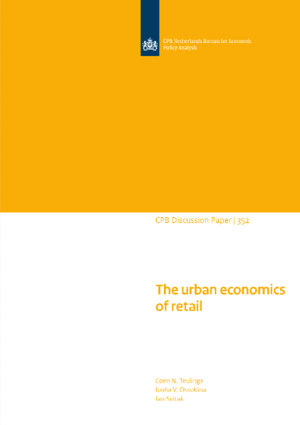June 2, 2017
The urban economics of retail
This paper is the first to document empirically that urban shopping areas have a pronounced centre where the rents are the highest, and a negative rent gradient. We use this insight to build and test empirically a simple theoretical model of the competition between the residential and the retail land in a city. The model predicts that rents and occupancy rates on the edges of shopping areas are most sensitive to changes in economic conditions. Demand shocks may lead to transformations between retail and residential land use, mostly at the edge, and to a contraction or expansion of shopping areas.
The model predictions are tested on unique data on the location and characteristics of all retail and non-retail properties within 300 largest shopping areas in the Netherlands in 2004-2014, a period including the Great Recession. With every 100 metre distance from the centre of a shopping area rents fall, on average, by 15 percent. Shopping streets, areas located on attractive sites and areas offering free parking have a flatter distance decay. The vacancy rate on the edge of a shopping area is almost twice as high as in the centre. During the Great Recession some 2% of the retail properties were transformed into other use, mostly on the edges of the shopping areas.
Downloads
Pdf, 4.1 MB
Authors
Ioulia Ossokina
Coen Teulings
Jan Svitak
